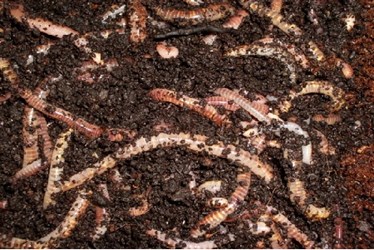Are Worms The Next Solution For Food Producers To Go Green?
By Isaac Fletcher, contributing writer, Food Online

Composting worms offer food producers, processors, and manufacturers a cost-effective, eco-friendly option for their recycling needs
A small Australian enterprise recently launched Global Worming, a business that creates customized worm farms using different types of composting worms — Tiger, Indian Blue, and Red Wiggler — that will eat paper, food scraps, cardboard, and most other organic materials. The worm farms are intended to help food processors and manufacturers reduce operation costs by providing a solution for handling organic materials left over from processing and packaging. The farms are easily scalable to fit the specific needs of both big and small food producers.
The trend of reducing waste by not throwing away food and ingredients left over from production is on the rise, and will likely continue over the next several years. Food processors have already adopted many recycling and sustainability initiatives to cut costs and eliminate waste, and worm farms could provide the next easily-adaptable recycling solution. Previously, paper, cardboard, and other recyclables needed to be brought to collection and pick-up locations, costing time and resources. However, with worm farms, food processors can turn this organic waste into a nutrient-rich byproduct, perfect for use as a fertilizer.
Unlike the earthworms that many people are familiar with, composting worms are surface dwellers and have a sort of self-regulating system to control their own population. A rise in the quantity of waste created by a food processor will be met with increased worm reproduction rates. Accordingly, if the quantity of waste decreases, the worms will cannibalize and reduce reproduction to the appropriate level. With their ease of operation and cost savings potential, we may see worm farms coming into popularity in the near future.
Check out how analytical technology helped Britannia Food Ingredients increase efficiency
Worm banks are not the only food waste reduction solution to be recently implemented. The Innovation Center for U.S. Dairy and the USDA’s Food Waste Challenge entered a partnership last year with the Cleveland Browns to turn food waste at their stadium into renewable energy and a source of fertilizer. The stadium typically feeds 73,000 hungry fans, generating nearly 3.5 million tons of wasted food scraps each game. Instead of sending the food waste to a landfill, it is sprayed with water into a commercial grade garbage disposal. The waste is ground up, placed into tanks, and picked up by Quasar Energy Group who then delivers it to an anaerobic digester at the Ohio State University Agricultural Research and Development Center. The digester creates biogas and nutrient-rich fertilizer. The biogas can be used to generate electricity and the fertilizer is sent out to assist local farms.
Food waste reduction innovations are becoming increasingly more important, as food producers and other organizations work toward solutions to not only eliminate unnecessary waste, but turn unavoidable waste into something beneficial. With opportunity to reduce operating costs and create profitable byproducts, green options for waste reduction will certainly become more prevalent in coming years.
